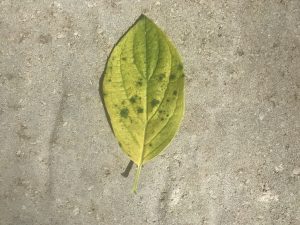The Best Guide To Hydrangea Leaves Turning Yellow
Hydrangea Leaves Turning Yellow Fundamentals Explained
Table of ContentsThe Single Strategy To Use For Hydrangea Leaves Turning YellowThe Of Hydrangea Leaves Turning YellowSome Known Details About Hydrangea Leaves Turning Yellow Some Known Questions About Hydrangea Leaves Turning Yellow.The Ultimate Guide To Hydrangea Leaves Turning Yellow
These problems are simple to identify and deal with if you take steps before root rot embed in. A dampness meter can aid guide you to the ideal technique of improvement. Large leaves typically look sagging during the afternoon warmth. When they stop working to perk up in the night or still look wilted in the morning, your plant could be overwatered.Remove the plant from the dirt and trim out any type of roots that aren't white and swollen (plump). Replant in a new area or function some sand into the dirt for far better drainage. Underwatering also creates leaves to turn yellow with brownish, crispy sides. Don't try to remedy the problem by watering exceedingly.
Photosynthesis, as all of us recognize, is important for plant survival, so chlorosis demands to be dealt with swiftly. While chlorosis can be triggered by other nutrient deficiencies, it is most generally an iron shortage. In the complying with section you will discover just how to acknowledge whether your plant has an iron deficiency or another thing.
Initially shows up on the older fallen leaves, however the leaf veins stay environment-friendly. While there is normally sufficient iron in all-natural dirt, hydrangeas often battle to take in enough of it.
Fascination About Hydrangea Leaves Turning Yellow
The finest way to stop iron deficiency-chlorosis in hydrangeas is to plant them in suitable ericaceous or acidic soil. When planting in a bed, mix in some peat or reduced-peat ericaceous compost and examine the p, H value as soon as a year. This is necessary due to the fact that the compost combination around the plants will certainly affect the p, H value of the soil in the long run and the p, H worth might rise again.
It is only utilized on a business scale, where a long term iron deficiency would indicate substantial return losses. The unique fertilizers for this are usually pricey and require to be used in extremely specific dosages to prevent damage to the leaves. Foliar fertilisation is just efficient for a short period and needs to be used regularly or supplemented by typical iron fertilisation.
September is the ideal time of year to do something concerning those hydrangeas. Their fallen leaves are transforming yellow, the blossoms have faded, and their gangly appearance is making you insane.
Currently to face the remaining bush, not a rather sight as wintertime methods. Mophead, Lacecap and Oakleaf hydrangeas grow on old timber. What that implies is they will bloom next year on timber that was developed this year. Do not prune Mophead, Lacecaps and Oakleaf hydrangeas to the ground, as you will eliminate the stems that are prepared to grow next springtime.
Hydrangea Leaves Turning Yellow Fundamentals Explained
That method you won't be eliminating too many of next year's blossom buds. If the shrub is getting larger than you like, you can take out a 3rd of the live wood while you're in there.
We're best in the center of our late-blooming hydrangea season here, so I thought I 'd share a pointer for this specific kind of hydrangea that I discovered actually interesting. A whole lot of individuals have a similar problem with their panicle hydrangeas where they begin to see the leaves transforming yellow and leaving at different parts of the period and it can be pretty dramatic and rather concerning since it can take place really quickly on a hedge that appears like it's or else actually healthy.

Where we live in area 6, they're quite easy to have success with and they're actually prominent in our area, which is excellent because that means that there are hydrangeas practically all over at this time of year. When you see your hydrangea leaves beginning to turn yellow, you may assume that your plant is dying or being maltreated in some method, however as a matter of fact, the opposite is real.
The Basic Principles Of Hydrangea Leaves Turning Yellow
If you truly intend to maximize flowers, a (the middle number) will really help enhance the number and dimension of your flowers. You need to see the variety of newly-yellowed leaves decrease rather rapidly as quickly as you provide your hydrangea the food it requires. Hydrangea Leaves Turning Yellow. The bright side is that if you do absolutely nothing, the plant will certainly still be fine, it will certainly just have a few less leaves
Courtenay is the author of guide The Cleansing Ninja and has actually been featured in various magazines including Country Sampler Farmhouse Style, Better Residences and Gardens, Parents Magazine, Real Simple, and Our Residences.
Water logged dirt denies the roots of oxygen, causing root rot and yellow fallen leaves. On the other hand, underwatering or dehydration causes the plant to shrivel and its vegetation to yellow. Keeping a regular watering timetable and making certain correct drainage you can try here with drainage openings or layers can help stop these concerns.
With correct care and Hydrangea Leaves Turning Yellow maintenance, hydrangeas can grow and preserve their brilliant, vibrant leaves. Hydrangea leaves transforming yellow is an usual problem that can be attributed to different aspects.
Some Ideas on Hydrangea Leaves Turning Yellow You Should Know
